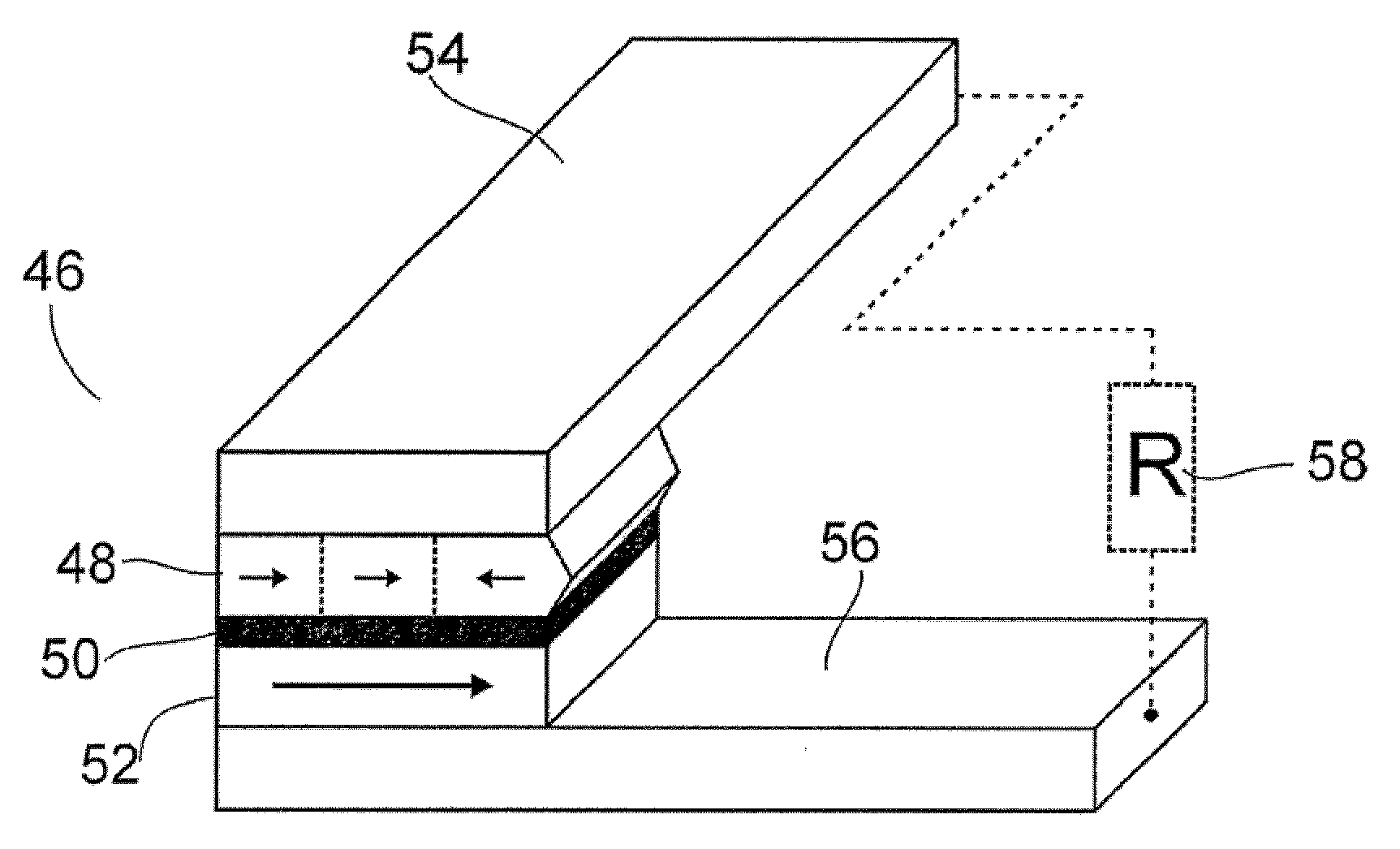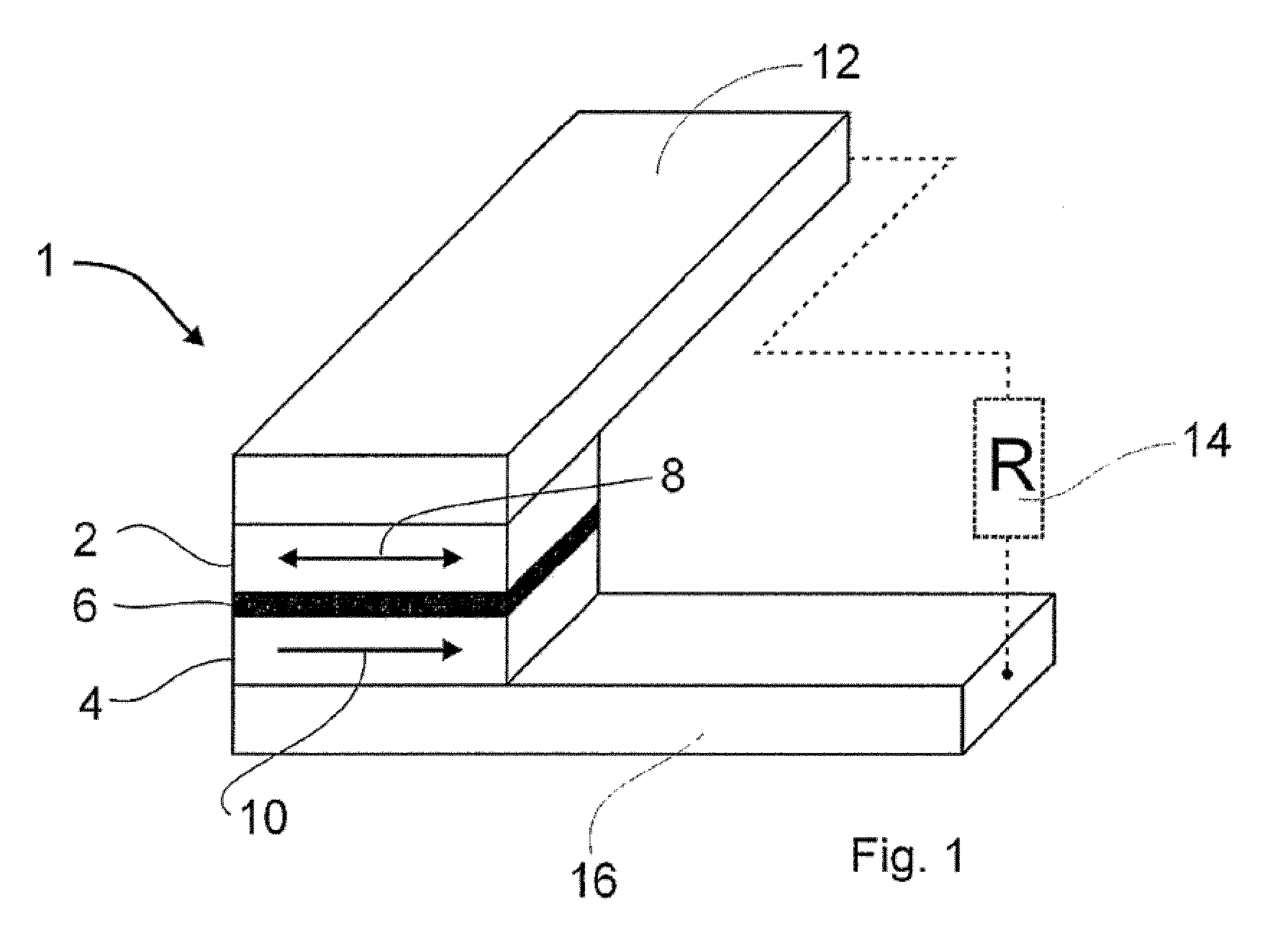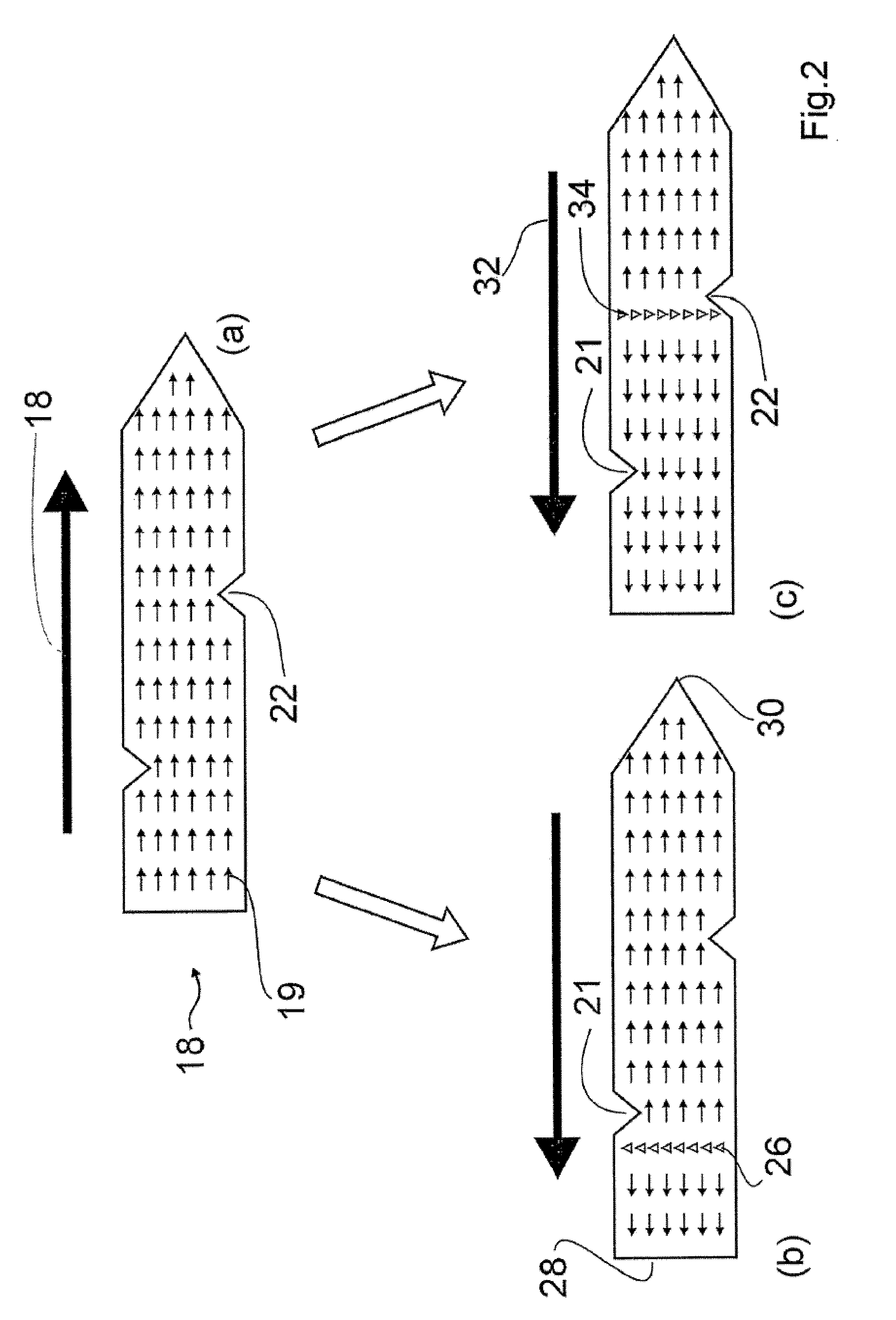Magnetic structure with multiple-bit storage capabilities
- Summary
- Abstract
- Description
- Claims
- Application Information
AI Technical Summary
Benefits of technology
Problems solved by technology
Method used
Image
Examples
Embodiment Construction
[0039]Referring to FIG. 2a, a magnetic structure embodying the present invention includes a magnetic layer 18 sufficiently thin that the magnetic moments 19 of the magnetic layer 18 are aligned substantially uniformly within the magnetic layer 16 along an external magnetic field 20. The magnetic layer 18 is of elongated shape with a long axis and a short axis. The magnetic moments 19 are predominantly aligned with the long axis. A first notch 21 and a second notch 22 are positioned asymmetrically along the long axis on opposite edges of the magnetic layer 18, respectively.
[0040]One end of the magnetic layer 18 is formed as a sharp edge in order to ensure that domain walls propagate in a first direction only.
[0041]FIG. 2b shows the magnetic layer 18 after the direction of magnetisation is reversed, by applying a magnetic field 24 or, as will be appreciated by persons skilled in the art, a spin-polarized current. A magnetic domain wall 26 having a first type is formed on the first end...
PUM
 Login to View More
Login to View More Abstract
Description
Claims
Application Information
 Login to View More
Login to View More - R&D
- Intellectual Property
- Life Sciences
- Materials
- Tech Scout
- Unparalleled Data Quality
- Higher Quality Content
- 60% Fewer Hallucinations
Browse by: Latest US Patents, China's latest patents, Technical Efficacy Thesaurus, Application Domain, Technology Topic, Popular Technical Reports.
© 2025 PatSnap. All rights reserved.Legal|Privacy policy|Modern Slavery Act Transparency Statement|Sitemap|About US| Contact US: help@patsnap.com



